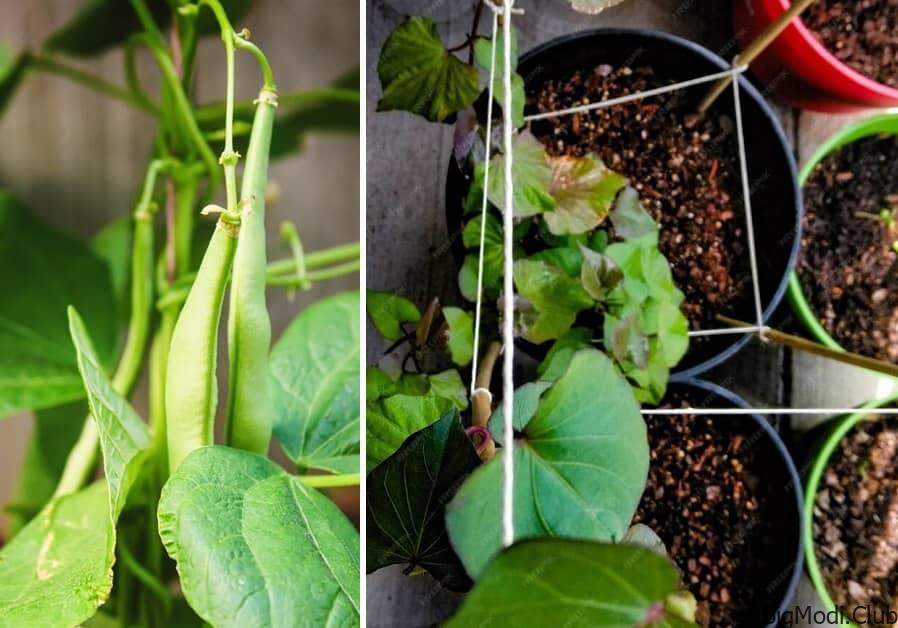In the realm of sustainable gardening and maximizing resources, utilizing kitchen waste to cultivate remarkable yields of dragon beans stands as a testament to innovation and eco-consciousness. In this comprehensive guide, we delve into the intricacies of growing dragon beans from kitchen scraps, unveiling the secrets to fostering robust plants and harvesting bountiful, crunchy fruits.
Unveiling the Potential: Introduction to Dragon Beans
Understanding Dragon Beans
Dragon beans, also known as yardlong beans or asparagus beans, are elongated, slender pods that boast a rich flavor profile and a satisfying crunch. With origins tracing back to Southeast Asia, these versatile legumes thrive in warm, tropical climates but can also adapt to various growing conditions.
Benefits of Cultivating Dragon Beans
Beyond their culinary allure, dragon beans offer a plethora of benefits to gardeners and enthusiasts alike:
- Nutritional Powerhouse: Packed with essential nutrients such as vitamins A, C, and K, as well as folate and fiber, dragon beans contribute to a healthy, well-rounded diet.
- High Yield Potential: Given the right conditions, dragon bean plants can yield abundant harvests, providing a sustainable source of fresh produce.
- Drought Tolerance: Resilient in nature, dragon beans exhibit remarkable drought tolerance, making them an ideal choice for regions with limited water resources.
- Soil Improvement: Through nitrogen fixation, dragon bean plants enrich the soil, enhancing its fertility and promoting overall garden health.
Harnessing Kitchen Waste: The Key to Sustainable Cultivation
Leveraging Organic Matter
In the quest for sustainable gardening practices, utilizing kitchen waste presents a golden opportunity to nourish the soil and minimize waste. Common kitchen scraps such as vegetable peels, fruit rinds, and coffee grounds contain valuable nutrients that can enrich the soil and foster healthy plant growth.
Composting: Nature’s Recycling
Composting serves as a cornerstone of eco-friendly gardening, transforming organic waste into nutrient-rich compost that nourishes plants and promotes soil health. By composting kitchen scraps alongside yard waste and other organic materials, gardeners can create a fertile growing environment for their dragon bean plants.
Creating a Compost Recipe for Success
To craft the perfect compost blend for dragon bean cultivation, consider the following ingredients:
- Green Materials: Rich in nitrogen, green materials such as fruit and vegetable scraps, coffee grounds, and fresh grass clippings provide essential nutrients and contribute to rapid decomposition.
- Brown Materials: High in carbon, brown materials such as dried leaves, straw, and cardboard serve as bulking agents, balancing the compost pile and improving its structure.
- Water: Maintaining adequate moisture levels is crucial for the composting process, ensuring efficient decomposition and microbial activity.
- Air: Proper aeration is essential to prevent anaerobic conditions and promote aerobic decomposition, facilitating the breakdown of organic matter into nutrient-rich compost.
Cultivating Dragon Beans from Kitchen Scraps
Selecting the Right Scraps
When selecting kitchen scraps for dragon bean cultivation, prioritize organic materials free from pesticides and chemicals. Opt for nutrient-rich scraps such as fruit and vegetable peels, coffee grounds, and eggshells to provide essential nutrients for plant growth.
Propagating Dragon Beans from Cuttings
To propagate dragon beans from kitchen scraps, follow these simple steps:
- Prepare the Cutting: Select a healthy, mature dragon bean pod and carefully remove the seeds from inside.
- Soak the Seeds: Place the seeds in water and allow them to soak for 24 hours, promoting hydration and germination.
- Planting the Seeds: Plant the soaked seeds in a well-draining potting mix, ensuring adequate moisture and sunlight for germination.
- Watering and Care: Keep the soil consistently moist but not waterlogged, and provide ample sunlight to encourage healthy growth.
Nurturing Dragon Bean Plants
Once your dragon bean plants have sprouted, provide them with the care and attention they need to thrive:
- Watering: Maintain consistent soil moisture, watering the plants regularly to prevent drought stress.
- Fertilization: Apply a balanced fertilizer to provide essential nutrients and promote vigorous growth.
- Support Structures: As the plants grow, provide support structures such as trellises or stakes to prevent them from sprawling and to maximize vertical space.
- Pest and Disease Management: Monitor the plants for signs of pests or diseases and take appropriate measures to prevent damage.
Harvesting the Bounty: Enjoying Crunchy Dragon Bean Delights
Timing the Harvest
Knowing when to harvest your dragon beans is essential to ensure optimal flavor and texture. Harvest the beans when they are young and tender, typically when they reach a length of 12 to 18 inches.
Harvesting Techniques
To harvest dragon beans, follow these simple steps:
- Inspect the Pods: Examine the pods closely, looking for firm, plump beans with vibrant coloration.
- Harvesting Method: Gently grasp the bean pod near the base and twist it off the vine, taking care not to damage the plant.
- Repeat Harvest: Continuously harvest mature pods to encourage continuous production throughout the growing season.
Culinary Delights: Recipes for Dragon Bean Enjoyment
Dragon beans lend themselves to a myriad of culinary applications, from stir-fries and salads to soups and stews. Here are a few recipe ideas to inspire your culinary creations:
- Stir-Fried Dragon Beans: Sauté dragon beans with garlic, ginger, and soy sauce for a flavorful side dish.
- Dragon Bean Salad: Toss blanched dragon beans with cherry tomatoes, feta cheese, and balsamic vinaigrette for a refreshing salad.
- Dragon Bean Curry: Simmer dragon beans in a fragrant curry sauce with coconut milk, curry paste, and aromatic spices for a hearty vegetarian meal.
In conclusion, harnessing kitchen waste to cultivate dragon beans represents a harmonious union of sustainability and innovation. By repurposing organic materials and embracing eco-friendly gardening practices, we can not only minimize waste but also enjoy the bountiful rewards of nature’s bounty. So, roll up your sleeves, gather your kitchen scraps, and embark on a journey to transform waste into wonder with the magic of dragon beans!


